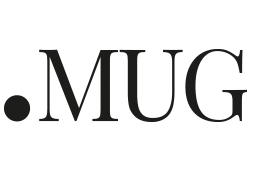The most sophisticated use of technology—but also the most intrusive— involves changing people’s social and emotional behaviors in real time (Accenture Research)
When we talk about technological evolution, we often make the mistake of associating it with the obsolescence of the individual, as if technological change necessarily represents a threat. On the contrary, recent research and important case studies show that individuals might find an excellent ally in technology. And this is the turning point. We can no longer fear technological transformation–we should be trying to stimulate it. That’s because it represents an opportunity for individual growth (against the process of standardization), and for digital transformation in our companies. Immersive technology, VR, AR and mixed reality, incentivize the development of EMOTIONAL INTELLIGENCE (social skills, empathy, self-awareness), bringing value to all employees, as well as facilitating emotional learning. Identifying with a situation and putting yourself in someone else’s shoes can help develop shared feelings through virtual reality, the so-called empathy machine.
From lateral thinking to immersive learning
Not only do we need to look to the future, but we can also be inspired by the theories that have revolutionized our way of thinking in the past. In 1960, Edgar Dale came up with the principle of Learning by doing — that people can learn and memorize more by experiencing something. This active or experiential learning today has evolved into the concept of “immersive learning,” or rather, not only experiences but also immersion. Direct involvement in internal processes, the ability to visualize career paths, and sharing company values can help build a “feeling of belonging“ for employees. It also guarantees total security through the process of trial and error. When you can experiment without fear, you feel safe enough to consider alternative solutions, thus giving space to more creative thinking.

This brings us back to the idea of lateral thinking, a term coined by the Maltese psychologist Edward De Bono. This is a method of problem solving that calls for a certain approach — observing the problem from different angles — as opposed to the traditional method that prizes concentrating on a single direct solution to the problem.
How can we ensure that immersive technology supports the creative process? Certainly learning through full engagement offers the possibility to visualize concepts that might otherwise seem too abstract, and to experiment with different solutions without fear of direct consequences (risks, safety and investment).
Our solution: the processo of “Immersive Onboarding”
A study from Deloitte showed that HR budgets for investments in digital transformation will grow by 25% in the next year. The world of HR is revolutionizing all its individual sectors: payroll, benefits, performance, management, learning and development, rewards and recognition, and hiring. This is in addition to the fact that in 2017, the number of employees trained through immersive technologies was already growing. 38% of employees now expect training in VR, while 82% of millennial workers prefer companies that use VR and AR technology. And then there’s the added benefit that memory retention doubles the moment someone experiences something in virtual reality.
An analysis of the market offers us one certainty: innovation is something that needs to first happen within a company, then in its training and other processes, and then externally. Onboarding is definitely a central phase, not only for training new employees, but also for the company’s positioning. We’re aware of the difficulties involved in activating a process of digitalization, which can be intimidating in how subversive and impactful it can be. This is exactly why our ONBOARDING process is a modular course that lets companies digitalize each department with micro activities, which build on each other to revolutionize the company’s structure. It’s a concrete way to overcome fears and motivate people to change.
Why use Gamification in the HR world

As part of our Onboarding process, the dynamic of gamification plays a central role. That is, in every activity or training course, the main goal is to activate a spirit of creativity and competitiveness in order to get good results. As the market trends show, gamification techniques help engagement grow by 48% while 90% of employees become more productive. Our VR ONBOARDING GAME starts from these assumptions, and creates courses that make learning fun and engaging. Through rewards, points, scores and badges, users feel motivated to complete their course, and at the same time, begin to recognize the company’s values in a more straightforward, direct way. The entire course is monitored via a dashboard with information about the employee, global scores, badges, timing per choice, etc. Ours is an evolutionary process of digital transformation that offers huge opportunities to the world of HR: to contribute to the company’s digitalization, and to involve employees and make them feel part of the change. By seeing the value of every single employee, and listening and personalizing their training courses with technology, a technological humanization is occuring. It’s an evolution that actively involves companies, contributes to their position in the market, makes them more attractive to millennials, and above all, favors development through smart and high-performing dynamics.
Michela Di Nuzzo
« Se scrivo ciò che sento è perché così facendo abbasso la febbre di sentire». - Fernando Pessoa Giornalista e co-founder, vivo il digital come imprenditrice e appassionata. Percepisco il cambiamento come un'opportunitá mai una minaccia. Occhi spalancati e orecchie aperte, sempre pronta alla condivisione, la chiave di ogni evoluzione.

